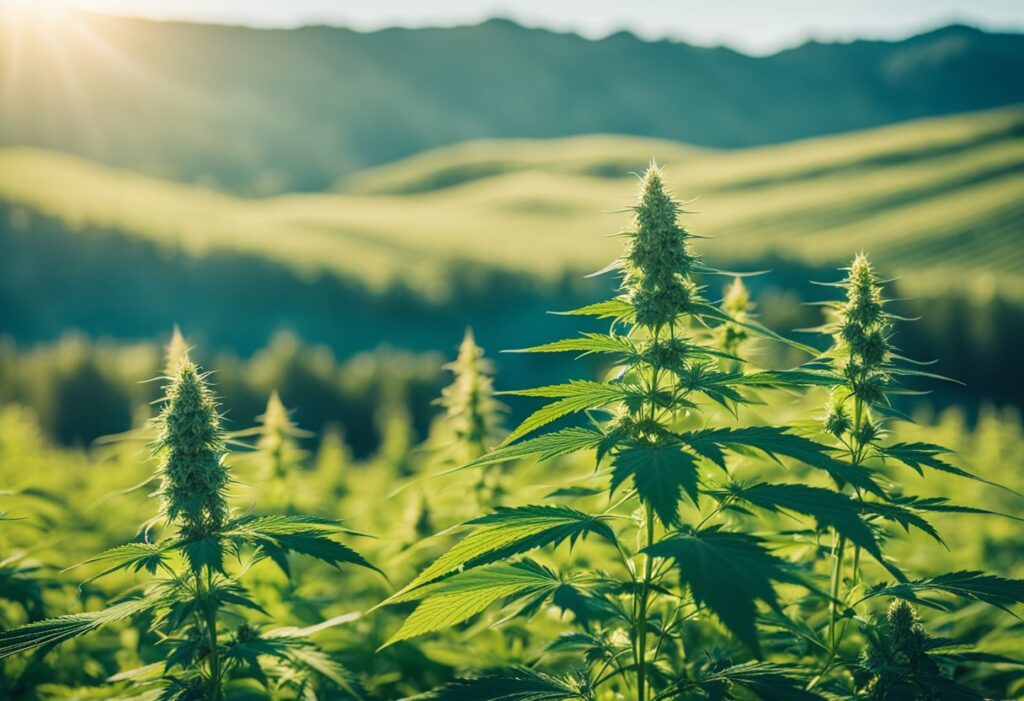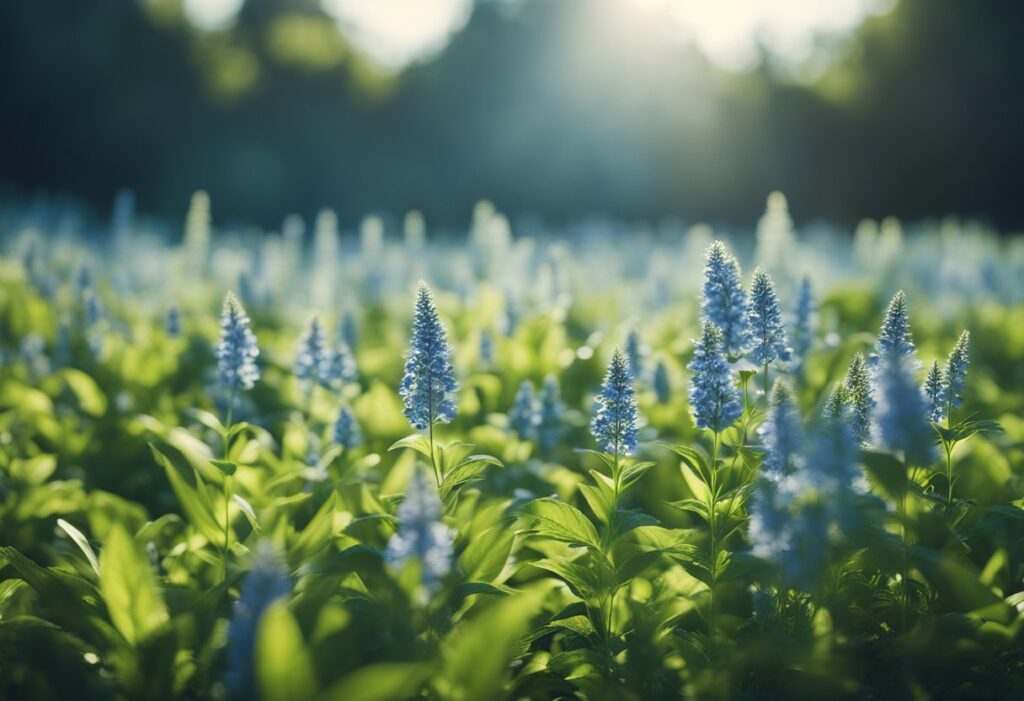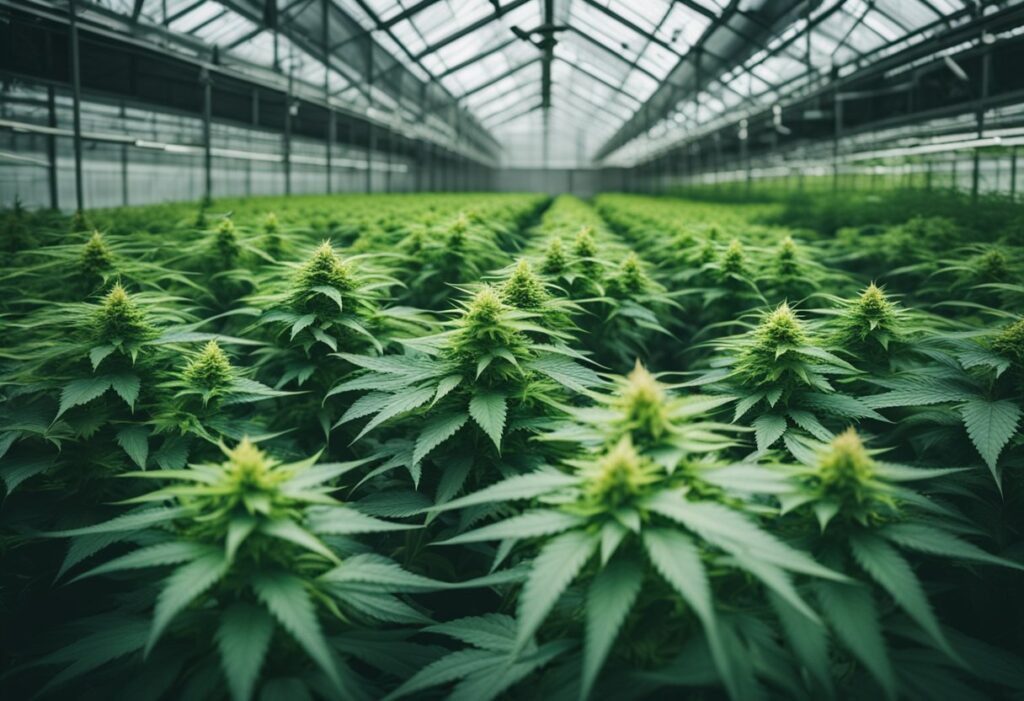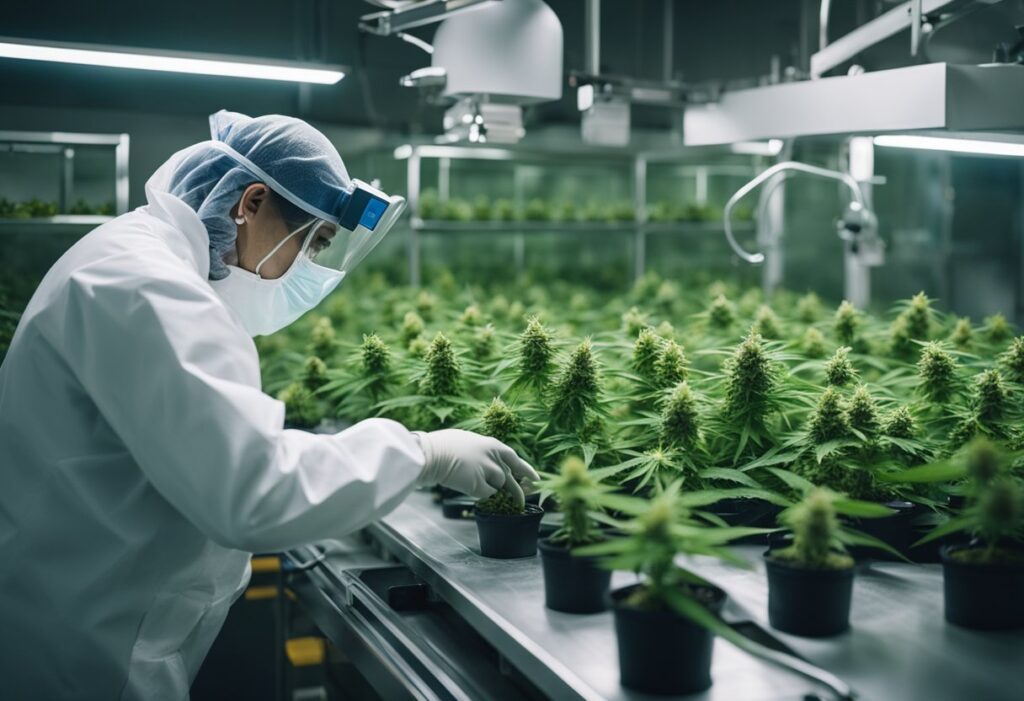
Selecting the right Blue Dream seeds is crucial if you aim to optimize your yields. Understanding the strain’s genetics helps you make informed decisions when choosing seeds for your garden.
Blue Dream is a sativa-dominant hybrid that combines the best traits of its parent strains: Blueberry and Haze. This genetic composition gives Blue Dream a unique set of characteristics:
The crossbreeding results in Blue Dream’s signature balance of full-body relaxation with gentle cerebral invigoration. As a cannabis strain from a genetic lineage with robust growth and high yields, Blue Dream thrives in environments similar to the climate where its parent strains flourished.
To ensure optimal growth and yield, selecting high-quality feminized seeds is key:
By focusing on high-quality Blue Dream feminized seeds, you maximize your potential for a bountiful harvest of this sought-after sativa-dominant hybrid.

Growing Blue Dream seeds in Canada can lead to impressive yields with the right conditions. Focus on climate and temperature, soil and nutrient balance, and humidity and ventilation management.
Blue Dream, a sativa-dominant strain, thrives in a consistent climate mirroring its native California environment. To mimic these conditions, you should aim for a stable temperature range.
Remember, as Blue Dream is sensitive to temperature fluctuations, maintaining stability is crucial for your growing success.
High-quality soil rich in nutrients is vital for the growth of Blue Dream seeds. The strain benefits from a soil mix that has good drainage and aeration properties. Aim for a soil pH between 6.0 and 7.0. Throughout the growing stages, you’ll want to balance nitrogen, phosphorus, and potassium carefully, adjusting the levels according to the plant’s growth stage.
A quick nutrient guide:
Managing the climate through controlled humidity levels and proper ventilation will further promote a healthy growth environment for Blue Dream.
Ensure there’s gentle airflow around your plants to help mitigate mold risks, strengthen stems, and improve gas exchange. A reliable ventilation system paired with a humidity control unit can provide the ideal environment for your Blue Dream seeds to flourish.

To achieve impressive yields with Blue Dream seeds in Canada’s unique climate, tapping into advanced cultivation techniques is essential. These methods will enhance both the quantity and the quality of your harvest.
Low-Stress Training (LST) is a technique aimed at optimizing light exposure and airflow across your plants. Here’s how you can apply LST:
By doing so, you encourage your Blue Dream plants to develop a wider and more evenly spread canopy. This increased exposure to light during the flowering period will promote more abundant and consistent bud production.
Pruning and topping are crucial for redirecting energy to the most productive parts of the plant. To properly execute these techniques:
By doing so, you are not only increasing yield but also enhancing the potential for higher trichome production on the remaining buds, leading to a richer harvest in terms of both volume and quality. Remember, while topping is beneficial, it is best done in the early vegetative stage to give your Blue Dream plants time to recover and thrive.
To maximize your Blue Dream yields, you need to ensure your plants are healthy throughout their life cycle by implementing stringent pest management and promptly addressing any nutrient imbalances.

The key to managing pests and diseases is to prevent them before they can take hold and stress your cannabis plants. Regularly inspect your Blue Dream plants for signs of pests like spider mites, aphids, and whiteflies. These invaders can quickly escalate from a small problem to a full-blown infestation, compromising the health and yields of sativa-dominant hybrids like Blue Dream.
Preventative Measures:
Common Signs of Pest Infestation:
Diseases can be just as destructive as pests. Look out for the appearance of mold or mildew, which thrive in high humidity. Keeping the humidity and temperature within optimal ranges minimizes the risk of these pathogens.
Blue Dream plants require a balanced diet of nutrients to thrive, including nitrogen (N), phosphorus (P), and potassium (K), as well as micronutrients like magnesium (Mg) and calcium (Ca). Monitoring your plants for signs of deficiencies or excesses is vital to maintaining their health.
Deficiency Symptoms:
Excess Symptoms:
Feeding your plants the right amount of nutrients can be a delicate balance, so it’s important not to overdo it. Start with the recommended nutrient levels provided by Farmers Lab Seeds and adjust based on the observed plant response. Remember, a confident approach to nutrient management involves patience and close attention to detail. Keep track of feeding schedules, and be ready to adapt as your Blue Dream plants move through different growth stages.

After harvesting your Blue Dream seeds from Farmers Lab Seeds, focusing on proper post-harvest processes is crucial for maintaining high-quality cannabis with desirable THC and CBD levels, as well as a robust terpene profile that influences aroma and flavor.
Drying is the first step in post-harvest processing that ensures your Blue Dream buds’ quality. Aim for a slow and controlled drying process to preserve terpenes like myrcene, pinene, and caryophyllene, which are essential for your buds’ aroma and potency.
Curing, which follows drying, further enhances the quality by breaking down chlorophyll and thus improving the buds’ smoothness and flavor.
To ensure you get the most out of your Blue Dream cannabis, assessing THC and CBD content along with the terpene profile is essential post-harvest.
By giving astute attention to drying and curing while keeping a close eye on the potency and terpene profile, your Blue Dream buds will be poised to provide the high quality expected from a premium cultivar.
Your Blue Dream plants will thrive in a stable climate with temperatures ranging between 72°F and 77°F. To promote vegetative growth, aim for 60-70% relative humidity and ensure you provide ample light for about 18 hours a day during this stage.
Utilize a balanced NPK fertilizer that caters to the vegetative and flowering stages. In the flowering stage, choose a fertilizer with higher phosphorus content to encourage bud development and potentially larger yields.
Apply techniques such as topping or employing the Sea of Green (SoG) method. These methods not only maximize your grow space but can also increase the light that reaches the lower branches, leading to robust growth.
Nitrogen, phosphorus, and potassium are crucial throughout the Blue Dream growth cycle. However, during the flowering phase, lower nitrogen levels while increasing phosphorus helps in developing dense and resinous buds.
Feminized Blue Dream seeds eliminate the risk of male plants, ensuring that every plant has the potential to produce a harvest. This makes the most of your space and resources, as you won’t need to identify and remove male plants.
We ship and deliver world wide via USPS and various couriers.
We offer a wide range of secure and anonymous online payment options.
We care about you, our customer. Please contact us with any questions or concerns.
Find out more about the benefits of being a loyal and regular customer.
WE ARE EVERY GROWERS ONE STOP SHOP TO ACQUIRE PREMIUM CANNABIS SEEDS FOR SALE IN THE USA, CANADA AND AUSTRALIA

Farmers Lab Seeds 2024, | All Right Reserved
Seeds are sold as novelty items, souvenirs, and collectibles. They contain 0% THC. We encourage our customers to check the legislation in their Country, State, Province, and Municipality prior to purchasing items from our store. We do not provide growing information.
All seeds are sold as hemp, and lab tested under 0.3% THC. This product is not for use by or sale to persons under the age of 21. This product should be used only as directed on the label. It should not be used if you are pregnant or nursing. Consult with a physician before use if you have a serious medical condition or use prescription medications. A Doctor’s advice should be sought before using this and any supplemental dietary product. All trademarks and copyrights are property of their respective owners and are not affiliated with nor do they endorse this product.
These statements have not been evaluated by the FDA. This product is not intended to diagnose, treat, cure or prevent any disease. Individual weight loss results will vary. By using this site, you agree to follow the Privacy Policy and all Terms & Conditions printed on this site. Void Where Prohibited by Law.